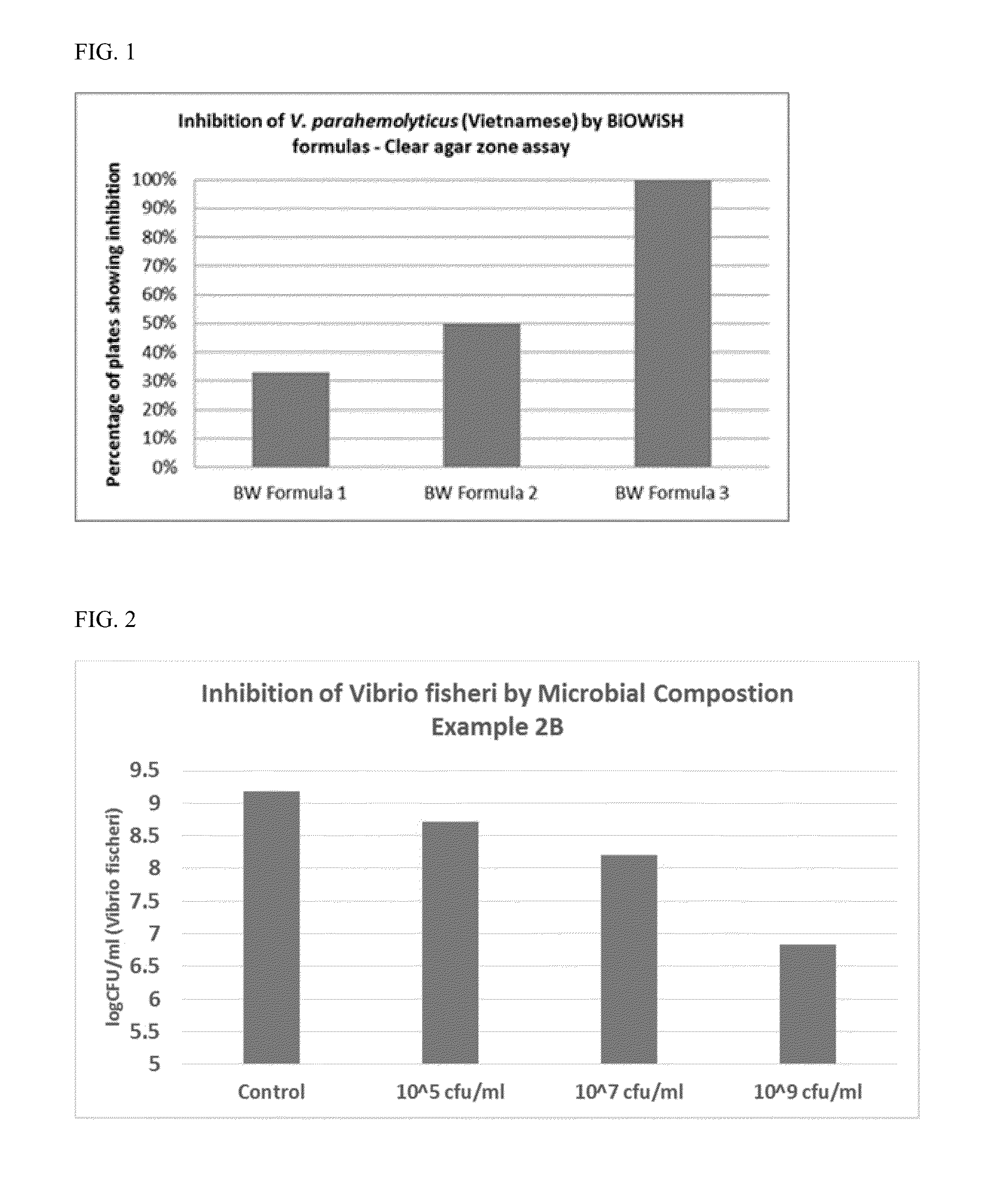Antibacterial compositions and methods of use
- Summary
- Abstract
- Description
- Claims
- Application Information
AI Technical Summary
Benefits of technology
Problems solved by technology
Method used
Image
Examples
example 1
Preparation of the Microbial Species
[0074]The microbial mixture of the present invention may be made by any of the standard fermentation processes known in the art. In the following examples, both solid state and submerged liquid fermentation processes are described:
[0075]Solid State Fermentation
[0076]Individual purified isolates of Pediococcus acidilactici, Pediococcus pentosaceus, and Lactobacillus plantarum were grown-up in separate fermenters using standard anaerobic submerged liquid fermentation protocols. The individual organisms were recovered from the fermenters via centrifugation, mixed together in equal proportions on a weight basis, then added to the following mixture: 1 part inulin, 2.2 parts isolated soy protein, 8 parts rice flour with 0.25% w / w sodium chloride, 0.045% w / w Calcium carbonate, 0.025% w / w Magnesium sulphate, 0.025% w / w Sodium phosphate, 0.012% w / w Ferrous sulphate and 29.6% water. This mixture was allowed to ferment for up to 5 days at 30° C. Upon complet...
example 2
Formulation of Water Treatment Product
[0079]The following Water Treatment formulations were prepared by dry blending the ingredients in a ribbon blender (all percentages are by weight):
COMPOSITIONSIngredientsABCDEFGHMicrobial55101025255050Compositionfrom Example 1Monohydrate95907550DextroseNutri-Sure ™95907550
example 3
Formulation of Animal Feed Products—Coating
[0080]The dried microbial mixture of Example 2H is formulated into animal feed pellets (shrimp, poultry, swine, and cattle) via the following methods: 10 grams of low melting grease (e.g. hydrogenated soybean oil with m.p. of 47-48° C.) are heated to just slightly above the melting point (50° C.). Once all the grease is melted, 0.01 to 1 gram of the dried, powdered microbial composition from Example 2H is dispersed in the melt with rapid stirring. 95 grams of animal feed pellets are then quickly added to this melt and rapidly stirred to achieve homogeneous coating. The pellets are allowed to air dry overnight at room temperature. The final microbial activity of the coated pellet is between 107 and 109 CFU / g.
[0081]Alternatively, low melting grease (e.g. hydrogenated soybean oil with m.p. of 47-48° C.) is added to a tank and heated to 50° C. while stirring. The melted grease is sprayed onto a stirred bed of feed pellets heated with forced air...
PUM
 Login to View More
Login to View More Abstract
Description
Claims
Application Information
 Login to View More
Login to View More - R&D
- Intellectual Property
- Life Sciences
- Materials
- Tech Scout
- Unparalleled Data Quality
- Higher Quality Content
- 60% Fewer Hallucinations
Browse by: Latest US Patents, China's latest patents, Technical Efficacy Thesaurus, Application Domain, Technology Topic, Popular Technical Reports.
© 2025 PatSnap. All rights reserved.Legal|Privacy policy|Modern Slavery Act Transparency Statement|Sitemap|About US| Contact US: help@patsnap.com

